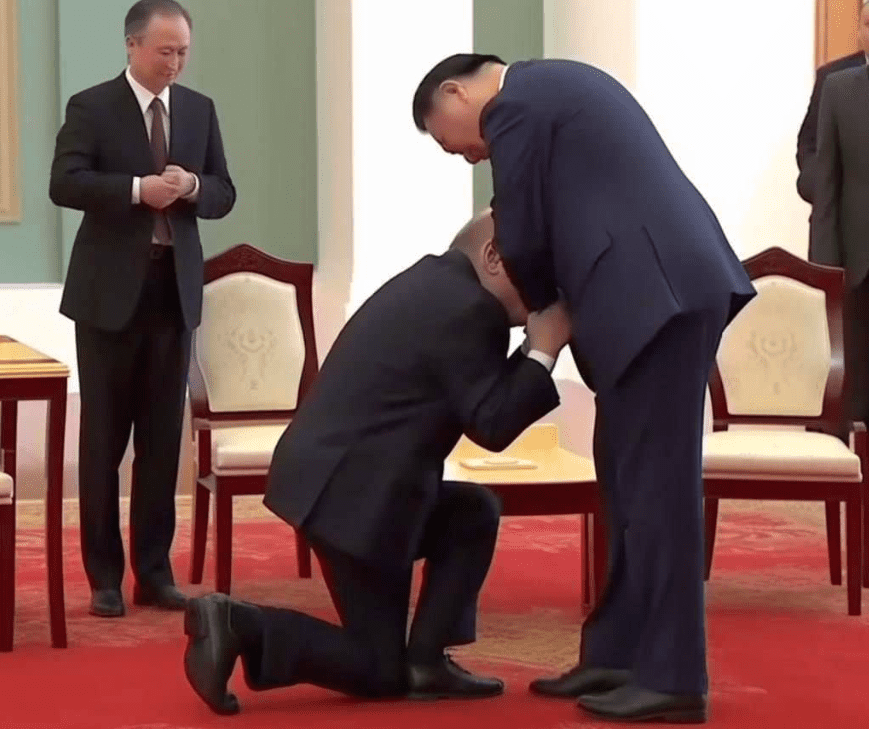Two days ago, former US President Donald Trump said he expects to be arrested soon. After mere hours, images of him being arrested emerged — from policemen swarming Trump to Biden himself swooping in and arresting Trump, a flurry of images invaded the internet. But there was a catch. The images weren’t real: they were fabricated by AI.

Since Trump announced that he expects to be arrested in regard to a hush money payment to adult film star Stormy Daniels, the world is abuzz with what this would mean for the US. Whether or not you’re worried about this situation, there’s one thing you should be worried about: disinformation.
Some of the first Trump arrest AI images start in a benign place. Eliot Higgins, the founder of Bellingcat, an independent collective of investigators, citizen journalists, and researchers. Higgins tweeted what he was doing. “Making pictures of Trump getting arrested while waiting for Trump’s arrest,” he wrote as he posted the images that were generated with the AI engine Midjourney v5.
But even though Higgins explained what he was doing, some people online found the images pretty convincing.
But Higgins’ images were just the tip of the iceberg. Plenty of other users started posting similar types of images. Most were transparent about what they were doing, but soon enough, everyone was posting images of Trump being arrested.
Some users shared images with less transparency. “#BREAKING : Donald J. Trump has been arrested in #Manhattan this morning!” states a tweet that featured the images.
Sure, you can figure out the images aren’t real — they’re overproduced, the hands look strange — but plenty of lies that were easy to see through tricked a lot of people; just look at some of Trump’s tweets for that. But the images aren’t the only forgery that came out.
During China’s Xi Jinping and Russia’s Vladimir Putin meeting, plenty of images emerged showing the two getting along well. But one image showed Putin seemingly kneeling in front of Jinping.

This image apparently tricked a lot of people into believing it was real — or maybe wanting to believe it was real because that’s how misinformation typically works. You don’t have to be an expert to tell it’s not a real image, but again, if you truly want to believe it’s real, you can. Unsurprisingly, the image went viral in Ukraine and several parts of the internet.
We’re already seeing the deepfakes
When image-generating AIs became even remotely decent, the possibility of deepfakes and other types of forgery was feared. As Higgins himself says, even when you say you’re creating a fake and the image is not all that good, it can still fool people.
“The Trump arrest image was really just casually showing both how good and bad Midjourney was at rendering real scenes, like the first image has Trump with three legs and a police belt,” Higgins told the Associated Press.
“I had assumed that people would realise Donald Trump has two legs, not three, but that appears not to have stopped some people passing them off as genuine, which highlights that lack of critical thinking skills in our educational system.”
This comes as a stark warning. Sure, it’s thrilling that AIs have progressed so much and anyone can create realistic images in a few minutes without any special skills. But it’s scary that, you know, anyone can create realistic images in a few minutes without any special skills. What happens when the images become more realistic, or when more people misleadingly declare them real? What if detection tools fall behind, and we won’t even be able to tell what’s true?
It’s hard to say what will happen, but presumably, we’re headed for a new world of disinformation. They say a lie can travel around the world and back again while the truth is lacing up its boots, and with the power of social media and AI, this has probably never been truer.
In the meantime, Higgins entertained himself by creating images of Trump’s prison life but Midjourney banned him from using the service. They also banned the word ‘arrested’. “I suspect it was pushing my luck when I did the [Twitter] thread,” Higgins said. With more and more AIs and more and more people starting to use this technology, we probably need some better safeguards.



